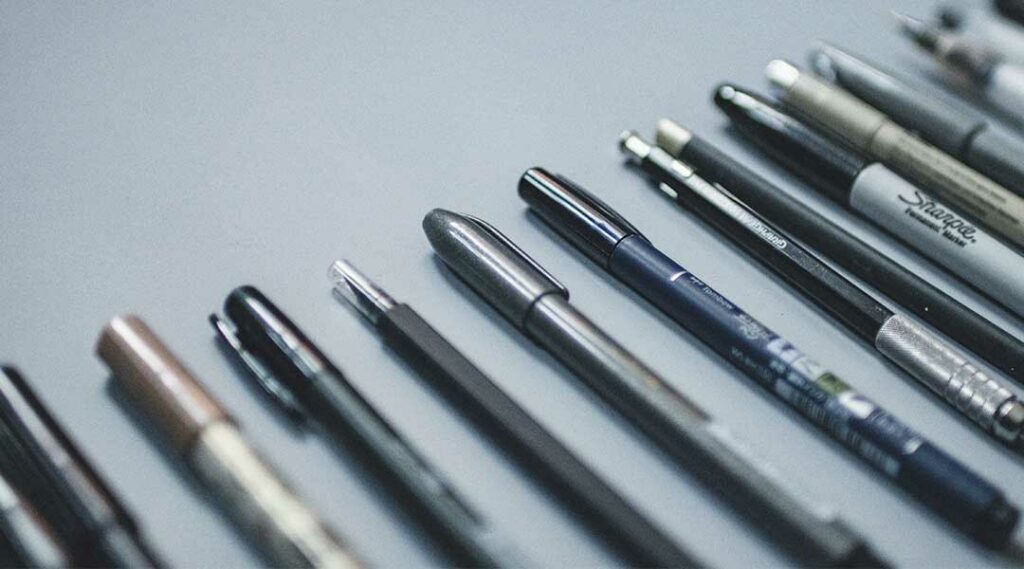
For centuries, humans have used various writing instruments such as the stylus (bone splinters), brushes, or quills. However, it wasn’t until relatively recently that an invention arrived that would revolutionise everything: the ballpoint pen.
Although we see it as a simple object, when it first appeared, it quickly became indispensable and revolutionary. In the world of promotional gifts, it remains one of the most popular items, and for good reason. Let’s explore the history of the ballpoint pen.
What was used for writing before the ballpoint pen?
The Sumerians, whose earliest writings date back to 3500 BC, used triangular sticks to write on clay tablets that were then baked. However, it was the Egyptians who introduced the quill as a more practical method on the now-famous papyrus.
These quills were made from bird feathers, which stored ink in their central shaft. This practice continued for centuries until the 17th century when more flexible models were developed. Soon after, the pencil was invented, though by the 19th century, this classic tool lost its popularity.
Who invented the ballpoint pen, and in what year?
The ballpoint pen was invented by John J. Loud in 1888, although there is some controversy surrounding this. He was the first to design what we now recognise as a ballpoint pen by placing a ball in a tube of ink to mark lines on the leather he tanned. This was a major advantage over quills, which couldn’t write on rough surfaces. As you can see, the design was somewhat similar to what we know today, but the final version came from someone else.
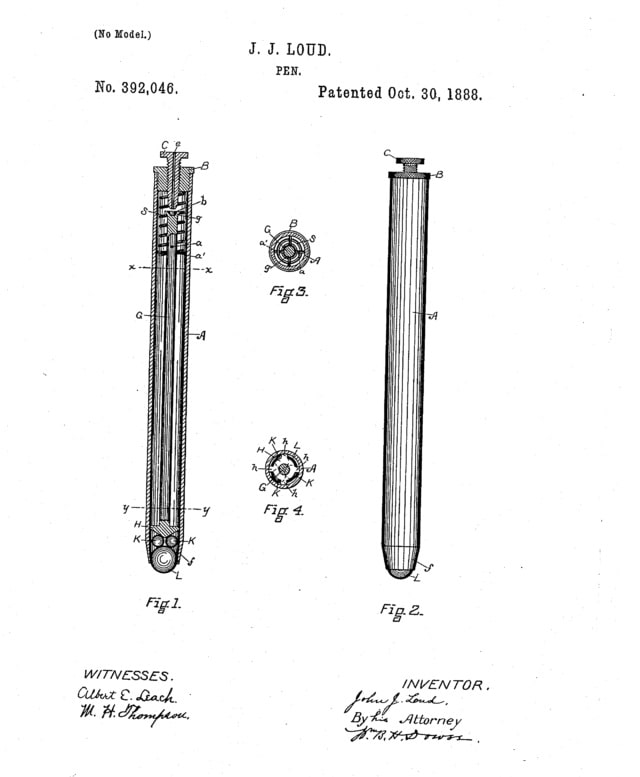
Some attribute the invention to a Hungarian man named László Bíró in 1938. He created a small ball to enable writing with an instrument suitable for left-handed people (as he was left-handed and, being a journalist, often smudged his writing with a quill).
To Loud’s design, Bíró added a conduit to channel ink from the reservoir to the ball (allowing gravity to bring the ink down). Moreover, Bíró’s brother, György, invented a highly viscous ink to prevent leaks and ensure quick drying.
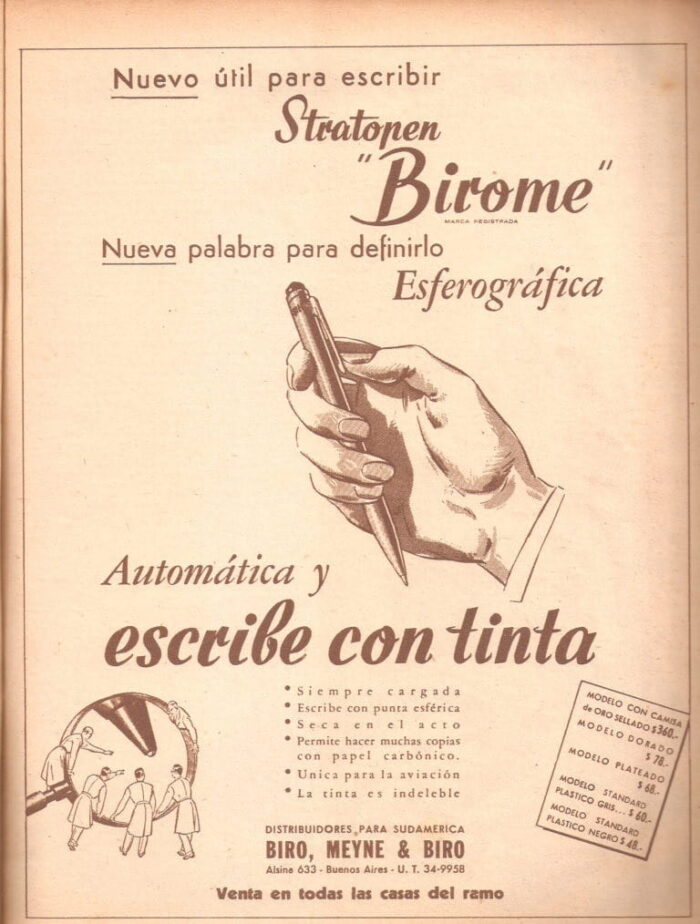
As both brothers were Jewish, they had to flee to Argentina during the outbreak of World War II. There, they met Meyne, who, thanks to financial support, made the invention a great success, allowing it to reach a broad audience. The pen was named “esferográfica” (from “sphere”) but in Argentina, it became popularly known as the “Biro.”
In 1953, Marcel Bich marked a turning point in the history of the ballpoint pen when his BIC model became the first to be sold at a very affordable price.
The Rise: The History of the BIC Pen
The story of the ballpoint pen wouldn’t be complete without mentioning the BIC, arguably the most famous model ever created. How did this iconic tool come about? Société PPA was founded in 1945 by Marcel Bich and Edouard Buffard, focusing on pens, mechanical pencils, and other accessories.
Bíró, whom we mentioned earlier, sold the rights to his ballpoint pen design to this French company, which went on to create the first BIC Crystal model. However, it was Raymond Savignac, a publicist hired in 1953, who advised Marcel Bich to shorten his surname to create a memorable brand name.
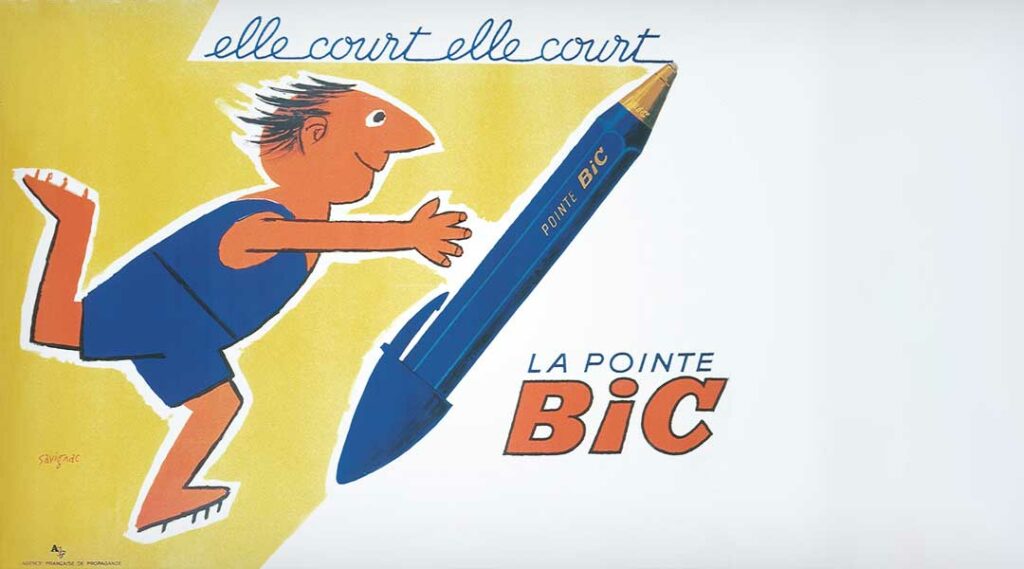
Initially, the pen was a luxury item, costing around 100 dollars. Over time, as its use became widespread, the decision was made to make it more affordable, as Bich wanted it to be a universal tool.
Where does the word “ballpoint” come from?
The etymology of the word “ballpoint” comes from ball (as in the mechanism we’ve discussed) and graph (writing from Greek).
Where does the ink in ballpoint pens come from?
The exact origin of ink is unknown, though it is often credited to the Chinese in 2500 BC. However, its documented use dates back to 400 BC. Typically, it consisted of black pigment, glue, and aromatic elements, all mixed with water.
In the Middle Ages, scribes used red ink to highlight certain sections, made from sepia ink or clay and wine. The true revolution, however, came in the 20th century with the invention of the printer, creating a need for fast-drying ink and a variety of colours. For more details on this, check out our post on the history of ink.
Branded Ballpoint Pen as Promotional Merchandise
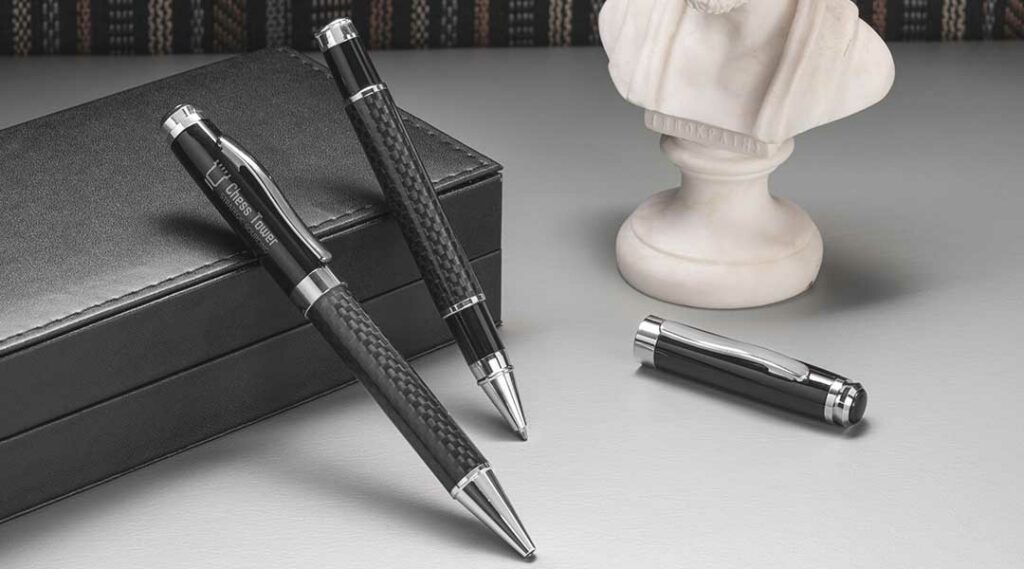
Finally, we come to the part most relevant to our business: promotional merchandising. Promotional gifts are not a modern invention; in fact, their origins date back to ancient Egypt. At that time, business owners would give branded gifts to kings or influential figures to gain favour. However, integrating such items into marketing strategies is a more modern practice, dating back to the early 20th century, when Jasper Meeks gave away backpacks with his logo to children at his shoe store, earning more customers in the process. His idea was quickly copied.
But what about the first branded ballpoint pen? You may be surprised to learn that it dates back about 2,000 years. The Romans created a type of pen that was found in London. These pens were used to write on wooden tablets filled with wax. Over 200 examples were discovered, and the inscriptions on their surfaces indicate they were intended as gifts.
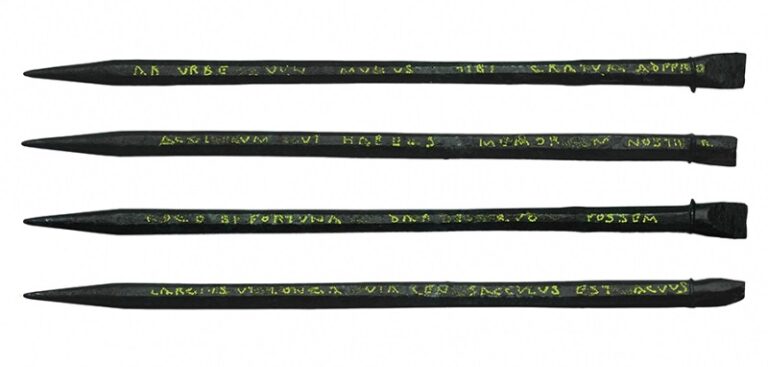
Today, branded ballpoint pens are among the most popular promotional items because they are inexpensive, highly useful, offer great visibility for logos, and come in a wide variety of designs to match any brand image. They are given out at large events, special occasions, and are often included in welcome packs for new employees, as they are an essential tool in any office.
Other Interesting Facts About Ballpoint Pens
- BIC claims that some of its pens can draw a line up to 2 kilometres long.
- László Bíró invented 32 devices, including a washing machine, an unpickable lock, and the electromagnetic system used in bullet trains.
- You probably knew this: the hole in the cap of a BIC pen was introduced in 1991 as a safety measure to prevent accidental choking.
- Ballpoint pen tubes are never completely filled with ink because the ink expands with heat and could overflow.
- The hole in the body of a ballpoint pen allows it to withstand high pressures, preventing it from breaking on aeroplanes.
What do you think of the history of the ballpoint pen? Do you feel any important moments or curiosities were missed? Leave your comments below, we’d love to hear from you!